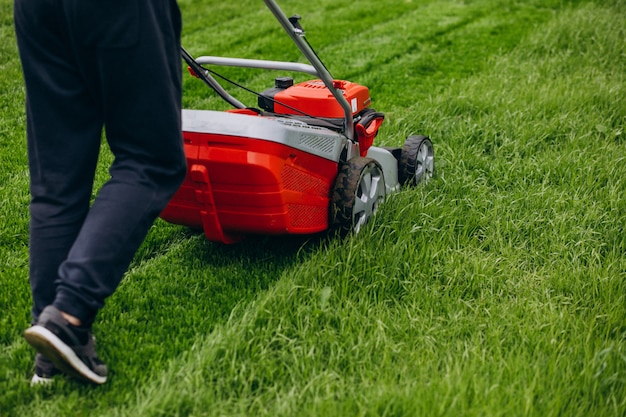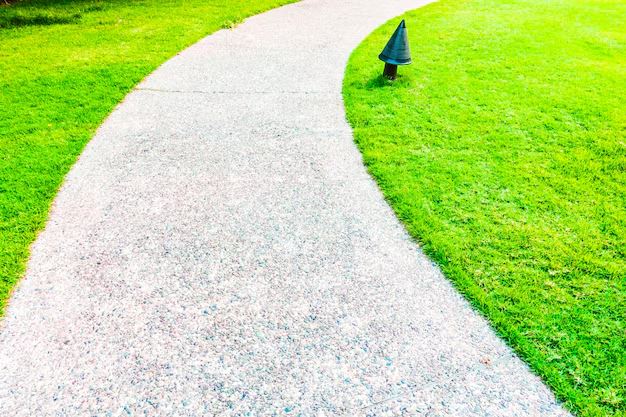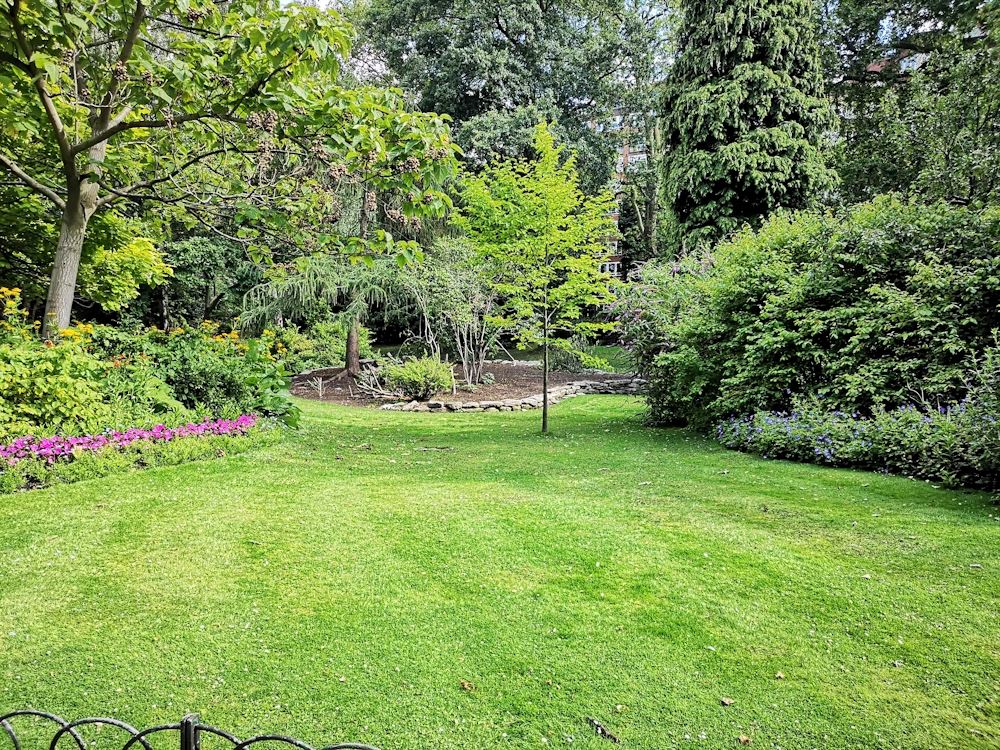A beautiful, green lawn is more than just a feast for the eyes - it's the showpiece of your garden. But you don't always have to pick up a spade to freshen it up. Skilful care and clever methods can renew and revitalize your lawn without having to resort to strenuous shovel work.
In this article, we show you how to effectively maintain and regenerate your lawn without digging it up.

Lawn freshening made easy: the basics of lawn care
Lawn care goes far beyond regular mowing. Lawn renovation is about breathing new life into a tired, worn lawn. The aim is to improve the health and appearance of the lawn through targeted measures such as scarifying, reseeding and fertilizing.
While lawn mowing is mainly for the sake of appearance, renovation focuses on strengthening the lawn from the ground up and maintaining its vitality in the long term.
Optimal starting conditions: The right preparation for your lawn
Before you start renovating your lawn, it is important to prepare the area properly. Careful lawn mowing lays the foundation. You should bring the lawn to an even height, ideally between 3 and 4 cm. This promotes the even distribution of nutrients and sunlight.
The right time for this step is also important: ideally, you should mow the lawn in dry weather, but not in extreme midday heat to avoid stressing the grass. This careful preparation creates optimal conditions for the subsequent renovation steps such as scarifying and fertilizing.
Improve lawn health: Scarifying as the centerpiece of maintenance
Scarifying is a crucial step in revitalizing your lawn. This method removes thatch and moss, which keep air, water and nutrients away from the grass roots. Scarifying makes small cuts in the lawn that aerate the soil and promote the growth of healthy grasses.
Choosing the right tool: Tips for using the scarifier
When selecting a scarifier, it is important to choose a device that suits your lawn. Manual scarifiers are suitable for small areas, while a motorized scarifier is more efficient for larger gardens.
When doing this, you should make sure that the blades are not set too deep so as not to damage the grass roots. A depth of a few millimeters is usually sufficient. Ideally, scarify in spring or early fall when the growing conditions for the lawn are optimal. After scarifying, it is advisable to fertilize and water the lawn to support regeneration and promote a dense, healthy carpet of grass.

Healthy lawn through soil check: The importance of pH value and soil composition
The quality of the soil is a decisive factor for a healthy lawn. A soil analysis, in particular the determination of the pH value, provides information on how well your lawn can absorb nutrients. An ideal pH value is between 5.5 and 7.0. If the soil is too acidic or too alkaline, this impairs the growth of lawn grasses. Simple test kits from garden retailers allow you to measure the pH value yourself.
If necessary, you can adjust the soil by adding lime (if the soil is too acidic) or sulphur (if the soil is too alkaline). Correct pH adjustment ensures that your lawn can effectively absorb the necessary nutrients and develop a lush green.
Green splendour through correct fertilization
Finding the perfect fertilizer: The key to nutrient supply
Choosing the right lawn fertilizer is crucial for the health of your lawn. A high-quality fertilizer should contain a balanced mixture of nitrogen, phosphorus and potassium. Nitrogen promotes growth and green color, phosphorus strengthens the roots and potassium improves resistance to drought and disease. There are special fertilizer mixtures for different lawn types and seasons.
Dosage and application: how to fertilize correctly
When applying fertilizer, the correct dosage is crucial. Over-fertilization can burn the lawn, while under-fertilization leads to weak growth. Always follow the instructions on the packaging and spread the fertilizer evenly over the lawn. It is best to fertilize in moderately damp weather so that the fertilizer can penetrate the soil well. Regular fertilization, especially in spring and autumn, ensures a dense, healthy lawn and promotes its regeneration after scarifying.
The foundation for lush greenery: seed and water in harmony
Choosing the right seeds: The basis for a healthy lawn
The choice of lawn seed is the first step towards a dense and robust lawn. It is crucial to choose a seed mixture that suits the climatic conditions and soil composition of your garden. There are special mixtures for shady areas, dry locations or lawns that are subject to heavy use. Find out about the different properties from specialist retailers and choose a mixture that meets your needs.
Sowing techniques: Achieving uniform green
When sowing, uniformity is the key to success. Use a spreader to ensure an even distribution of the seeds. The best time for sowing is in spring or early fall, when temperatures are not too high and regular rain provides natural irrigation.
Irrigation: the elixir of life for your lawn
Watering is crucial for seed germination and grass growth. In the first few weeks after sowing, it is important to water the lawn regularly and evenly. The soil should always be kept moist without puddles forming. Early mornings or late evenings are the best times for watering, as less water is lost through evaporation. A balanced watering strategy encourages deep root development and contributes to a healthy, hard-wearing lawn.

Aftercare for lasting green: important steps after lawn renovation
Even after renovation, regular maintenance of your lawn is essential. A key aspect is continuous mowing, with a cutting height of 3 to 4 cm being ideal. This promotes dense growth and prevents the formation of moss and weeds.
Equally important is regular fertilization, preferably in spring and autumn, to provide the lawn with essential nutrients. These measures ensure that your lawn remains healthy and strong even after renovation.
Lawn care pitfalls: how to avoid common mistakes
When renovating lawns, typical mistakes are easy to make, but just as easy to avoid. A common problem is setting the scarifier too low, which can damage the grass roots. Equally critical is over- or under-fertilizing, which can lead to uneven growth and lawn damage. Another mistake is neglecting regular maintenance such as mowing and watering.
By following these tips and keeping an eye on the right technique and regularity, you will lay the foundation for long-term success and a healthy, dense lawn.
Green finish: Important findings for your lawn
In conclusion, it can be said that successful lawn renovation without digging is possible and effective. With the right techniques for mowing, scarifying and fertilizing, as well as the careful selection of seeds and fertilizers, you can lay the foundation for a healthy, robust lawn. Regular maintenance, from correct mowing to targeted watering, is essential to benefit from a strong and dense lawn in the long term.
Don't be discouraged by the initial work - the results will reward you and your garden. Always remember: a well-maintained lawn is the basis for a lively, inviting garden.



